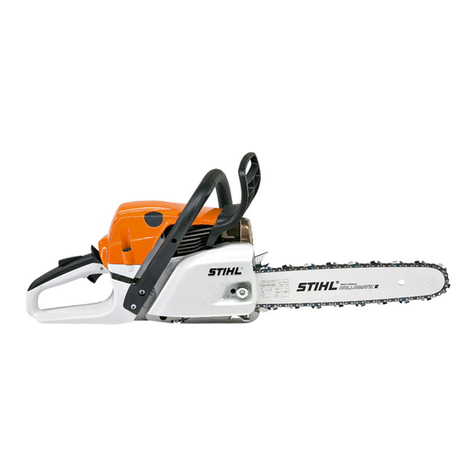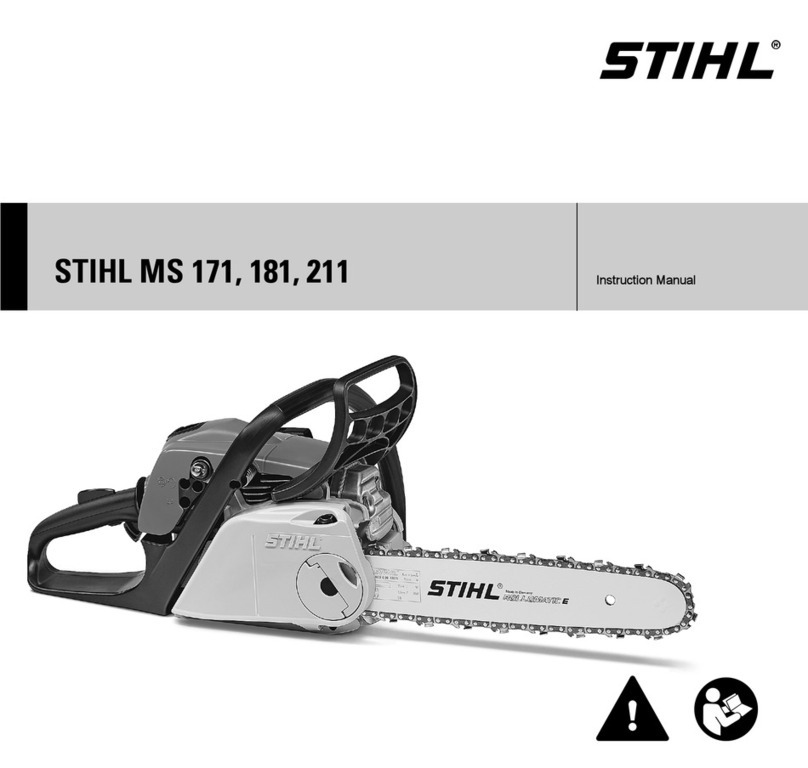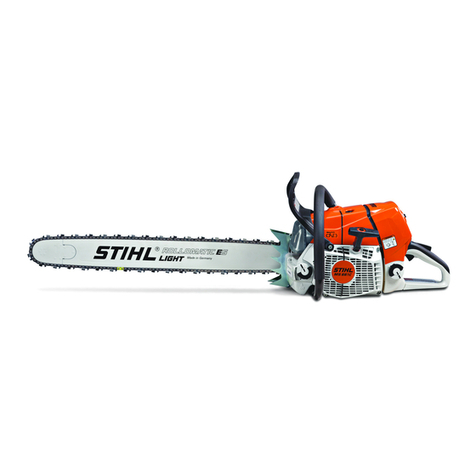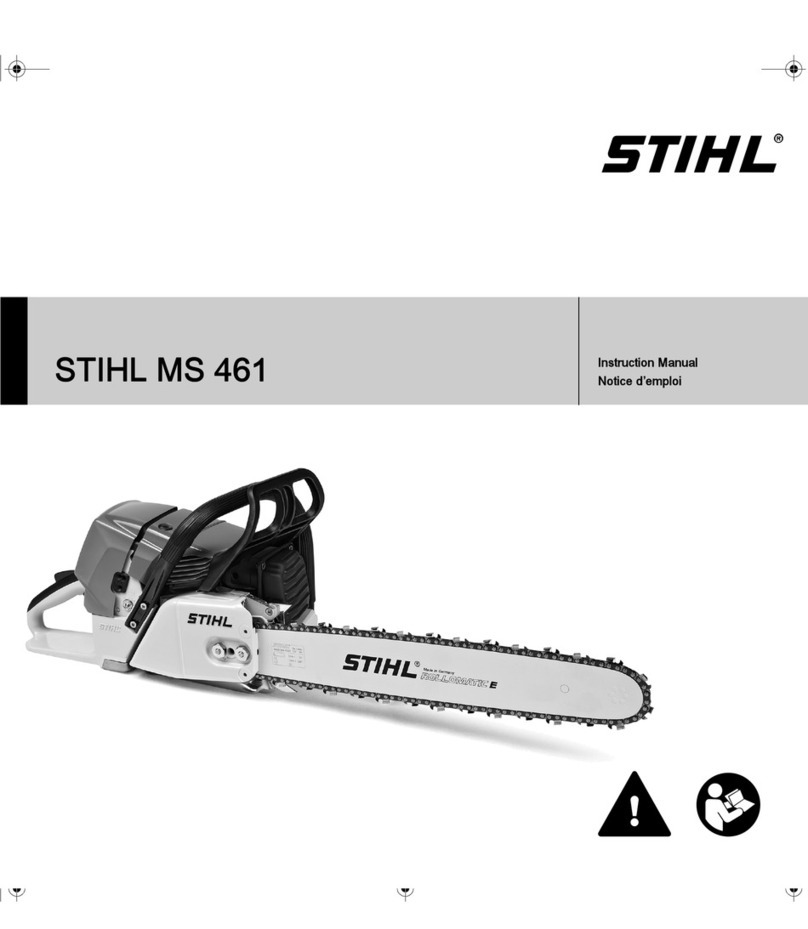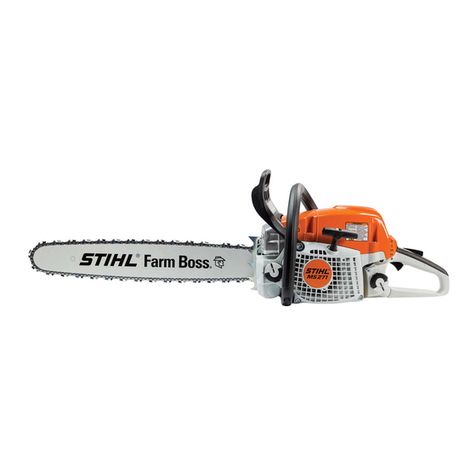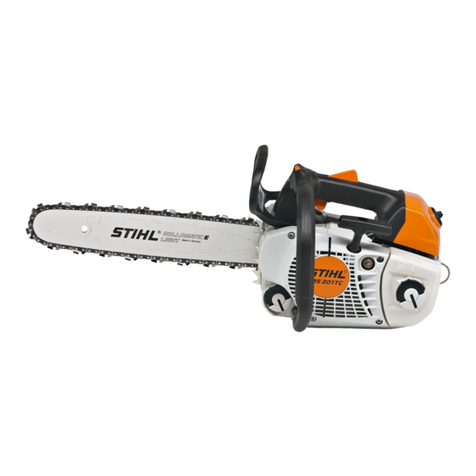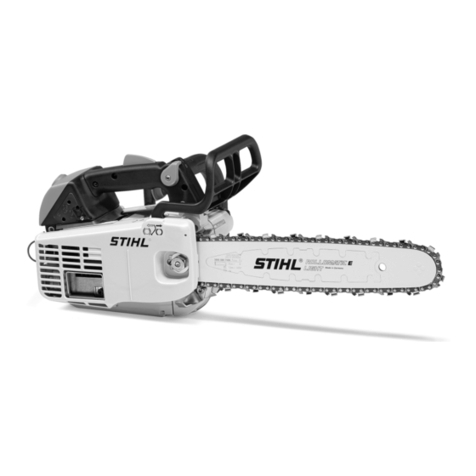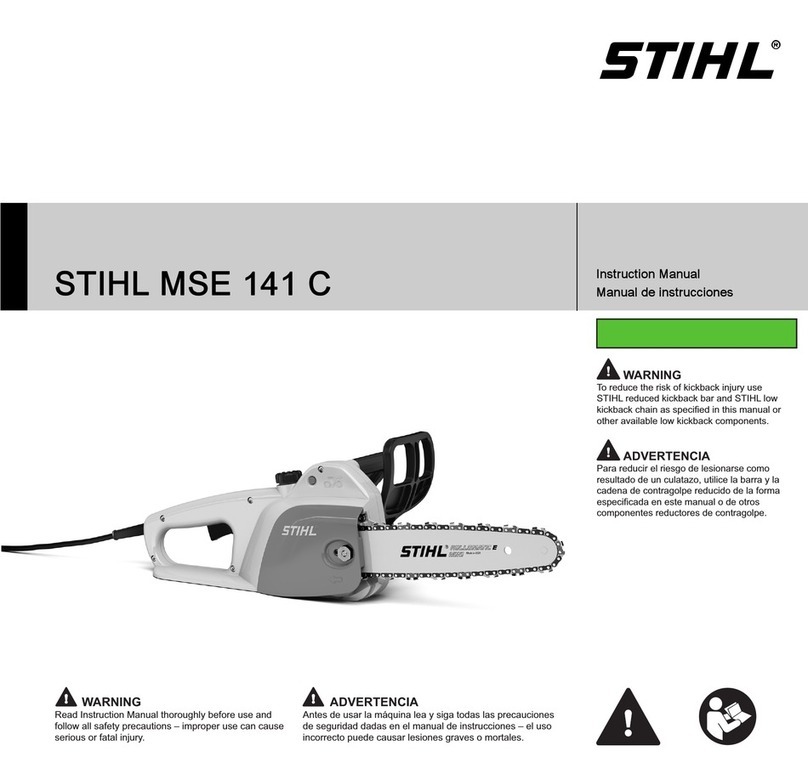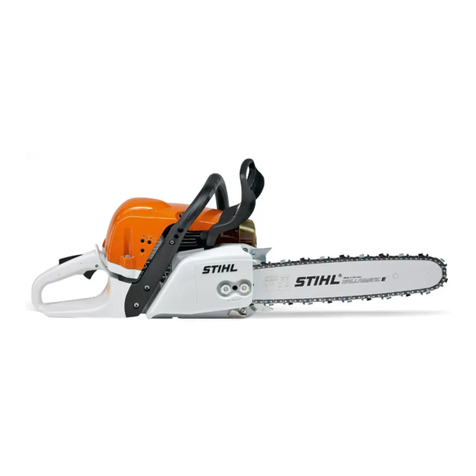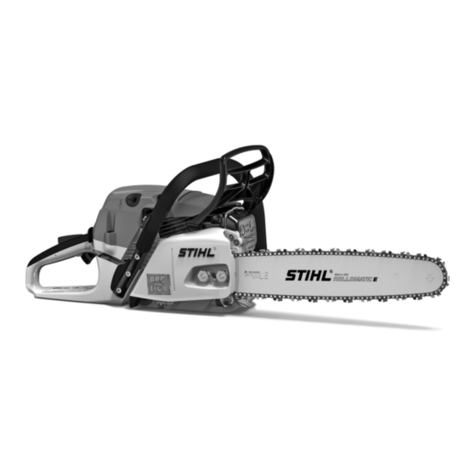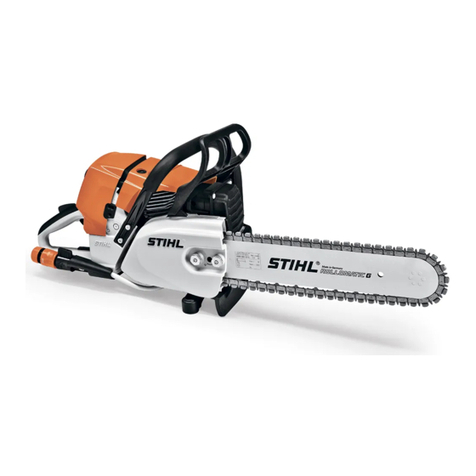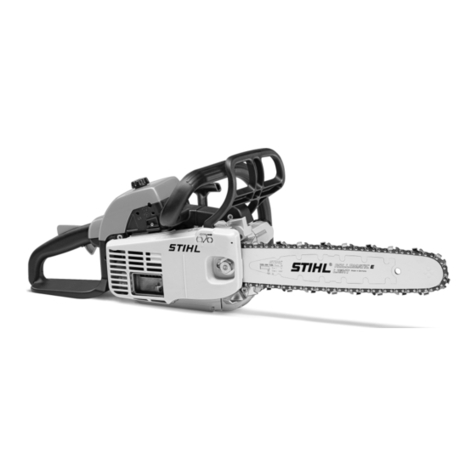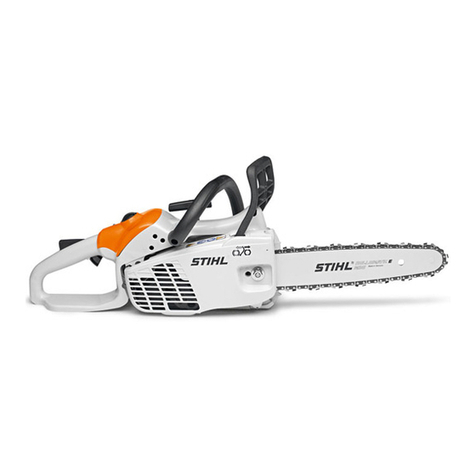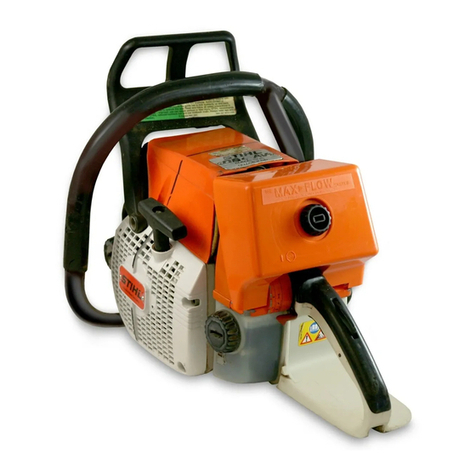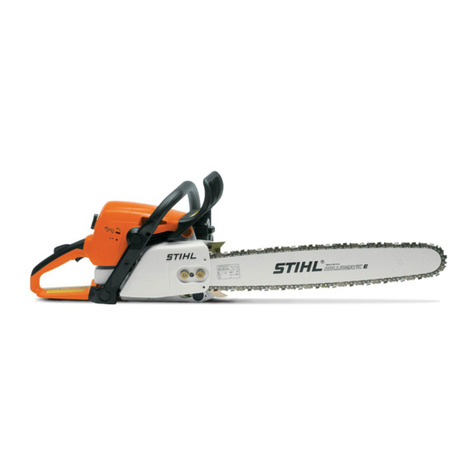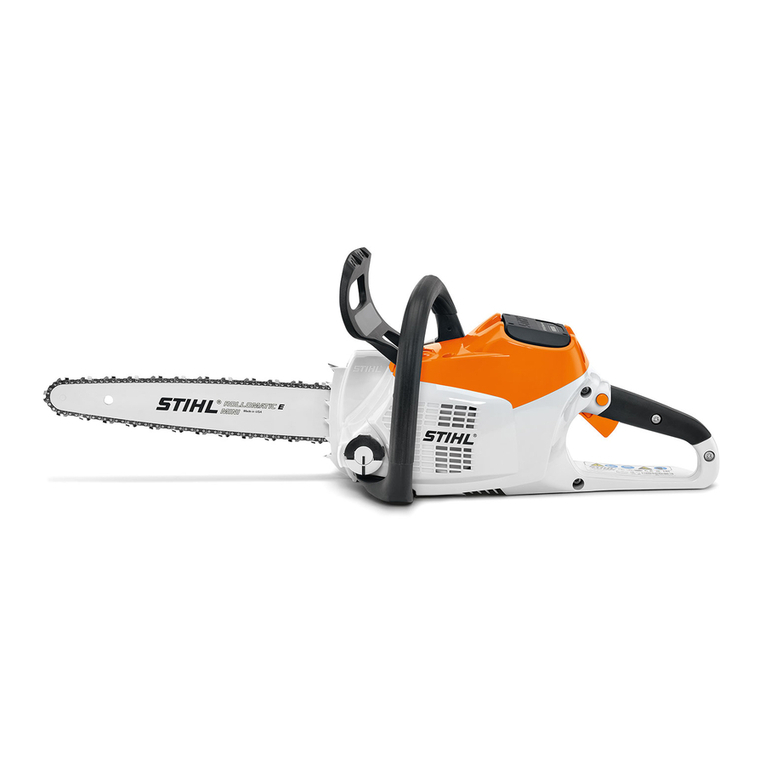4MS 231, MS 231 C, MS 251, MS 251 C
Preparations for servicing
Remove the chain sprocket cover,
saw chain and guide bar before
carrying out repairs or mounting the
machine to the assembly stand.
Always use original STIHL
replacement parts.
They can be identified by the STIHL
part number,
the {
logo and the
STIHL parts symbol K
This symbol may appear alone on
small parts.
Storing and disposing of oils and
fuels
Collect fuel or lubricating oil in a
clean container and dispose of it
properly in accordance with local
environmental regulations.
1.2 Safety Precautions
If the machine is started up in the
course of repairs or maintenance
work, observe all local and country-
specific safety regulations as well
as the safety precautions and
warnings in the instruction manual.
Gasoline is an extremely flammable
fuel and can be explosive in certain
conditions.
Do not smoke or bring any fire,
flame or other source of heat near
the fuel. All work with fuel must be
performed outdoors only. Spilled
fuel must be wiped away
immediately.
Always perform leakage test after
working on the fuel system and the
engine.
Exercise extreme caution while
carrying out maintenance and repair
work on the ignition system. The
high voltages which occur can
cause serious or fatal accidents.
Always wear suitable protective
gloves for operations in which
components are heated for
assembly or disassembly.
Improper handling may result in
burns or other serious injuries.
Always replace damaged parts.
Check disassembled parts for wear
or damage before re-installing –
replace as necessary.
Run the machine only with the
shroud mounted in position – there
is otherwise a risk of injury from the
fanwheel and a risk of engine
damage due to overheating.
The chapter on tightening torques
lists all machine components that
have to be tightened to a specific
torque or coated with threadlocking
adhesive. The specifications must
be maintained when tightening
down screws, nuts and other
fasteners in all the procedures
described in this service manual.
Fuel system – hose barb
connectors
Pull off or push on fuel hoses in line
with the connector, preferably by
hand, to ensure the tightness of the
fuel system.
Avoid damaging the hose barb
– do not use sharp-edged pliers,
screwdrivers, etc.
Do not cut open fuel hoses with a
knife or similar tool.
Do not re-use fuel hoses after
removal. Always install new hoses
– fuel hoses can be overstretched
during removal.
Install new fuel hoses either dry or
with the aid of STIHL press fluid,
b14.
Other press fluids are not approved
and may result in damage to the fuel
hoses.
Coat the ends of the hoses and the
connectors with STIHL press fluid
and then push the new hoses on to
the hose barbs, b14.

